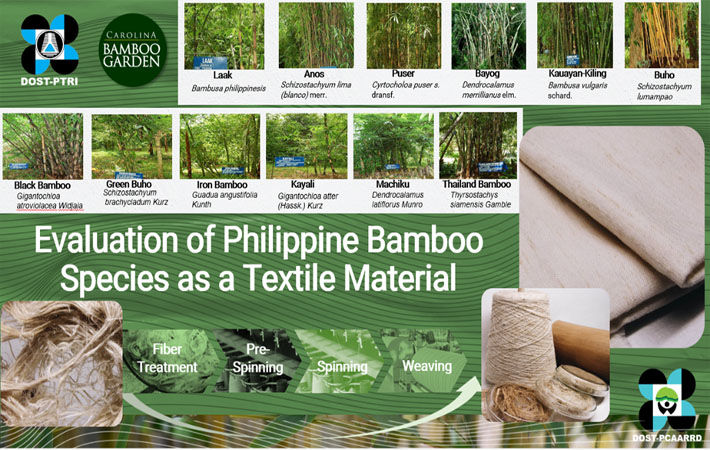The Department of Science and Technology-Philippine Textile Research and Development Institute (DOST-PTRI) in the Philippines recently signed a memorandum of agreement (MoA) with the Carolina Bamboo Garden (CBG) in Antipolo city to pursue research and development (R&D) on the use of bamboo as a ‘potential’ raw material for manufacturing textiles.
The MoA was signed between CBG president Joel Marcelo G Jimenez and DOST-PTRI Director Celia B Elumba on June 9.The Department of Science and Technology-Philippine Textile Research and Development Institute (DOST-PTRI) in the Philippines recently signed a memorandum of agreement (MoA) with the Carolina Bamboo Garden (CBG) in Antipolo city to pursue research and development (R&D) on the use of bamboo as a 'potential' raw material for manufacturing textiles.#
The project, titled ‘Evaluation of Philippine Bamboo Species as a Textile Material’, is funded by the DOST-Philippine Council for Agriculture, Aquatic and Natural Resources Research and Development (PCAARRD).
“DOST-PTRI will characterize and evaluate 12 bamboo species that CBG will provide for their potential as textile raw materials,” the institute said in a statement.
The CBG, launched in May 2000, houses 45 bamboo species.
“The project will validate the technology, technical data, and economic considerations in the mainstreaming of bamboo for textile manufacture,” it said.
The institute had implemented a project focused on the technical feasibility of native bamboo varieties like kawayan tinik (Bambusa blumenea), yellow bamboo (Schizostachyum brachycladum), bolo (Gigantochloa levis) and giant bamboo (Dendrocalamus asper) for textile manufacturing.
The study found kawayang tinik as the most suitable raw material for yarn production, yielding the highest fibre recovery (38.41 per cent) among other natural textile fibres studied, including pineapple leaf, banana, BANDALA, abaca and water hyacinth, the statement said.
“The treated fibers were also soft and pliable, fiber properties essential for yarn production,” it added.
Fibre2Fashion News Desk (DS)
